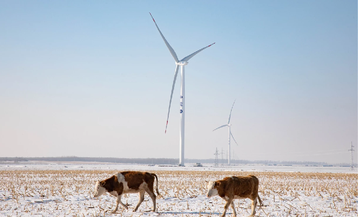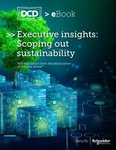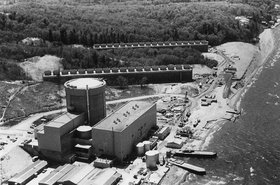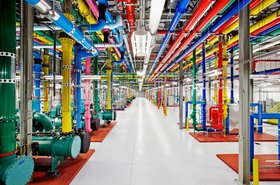Amazon says it was the largest corporate buyer of renewable energy in the world in 2023, and invested in more than 100 new solar and wind energy projects.
The tech giant bought more power purchase agreements (PPAs) globally than any other company last year according to an analysis from BloombergNEF. It says this means it has acquired more clean energy than any other company since 2020.
Having declared it will reach net zero by 2040, Amazon still has work to do to cut its emissions and has been criticised for a lack of transparency over its green credentials.
Amazon’s 500 renewable energy projects
Amazon says it now has backed more than 500 wind and solar projects globally which, when operational, are expected to generate more than 77,000 GWh of clean energy each year, or enough to power 7.2 million homes.
As reported by DCD, new schemes the company has invested in over the last 12 months include its first brownfield project, which will see a Maryland coal mine site repurposed into a solar farm. It has also backed its first renewable energy development in South Korea, along with 10 similar schemes across Texas.
These projects are “already helping power AWS data centers, Amazon fulfillment centers, physical stores, and corporate offices, while also providing new sources of clean power to local communities where the projects are located,” an Amazon statement said. It is aiming to have all its operations powered by renewable energy by next year.
“More than 90 percent of our operations were powered by renewables last year, but we’re not done,” said Adam Selipsky, AWS CEO. “We’re focused on continuing to find innovative ways to bring new projects online, address grid constraints, and work with policymakers to mitigate the impacts of climate change, all of which is helping Amazon move closer to achieving 100 percent renewable energy by 2025.”
Is Amazon progressing towards net zero?
While Amazon is keen to trumpet its progress on sustainability, others are skeptical about the effectiveness and transparency of its efforts.
Unlike its hyperscale cloud rivals, Microsoft Azure and Google Cloud, AWS does not offer customers a tool to choose the data center they use based on its emissions, nor does it publish the PUE rating of its facilities.
The value of PPAs as a tool to cut emissions has also been queried, with a study released last year by researchers at Princeton University's ZERO Lab finding that large energy purchases can have unintended results. They can simply displace emissions, or fail to stimulate net new energy production, it said.
One way around this to drive progress towards net zero could be time-based procurements, which match energy use hour-by-hour with green energy, the researchers said. But while some operators - including Microsoft and Google - have already committed to such an arrangement, Amazon has yet to do so.






